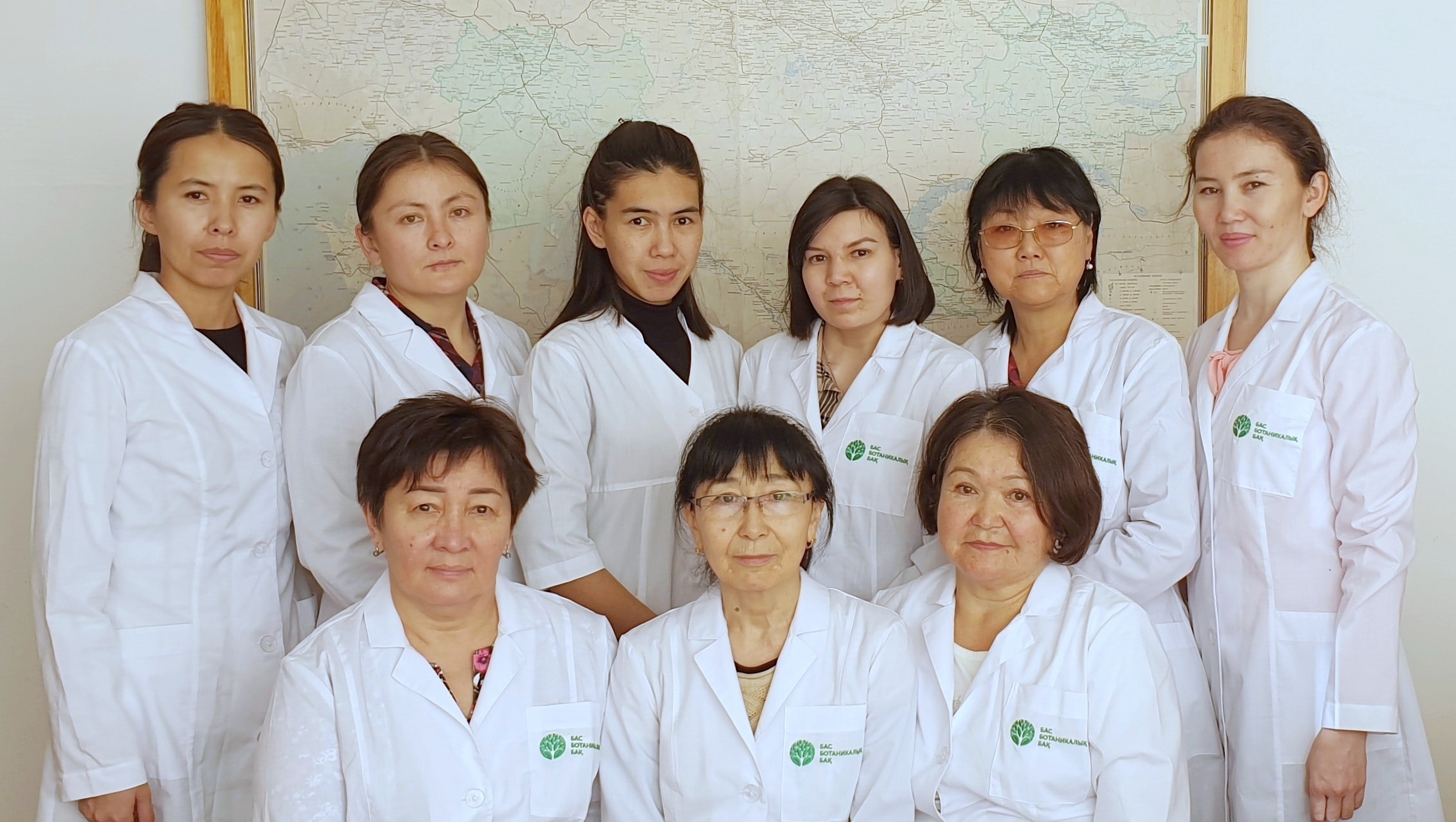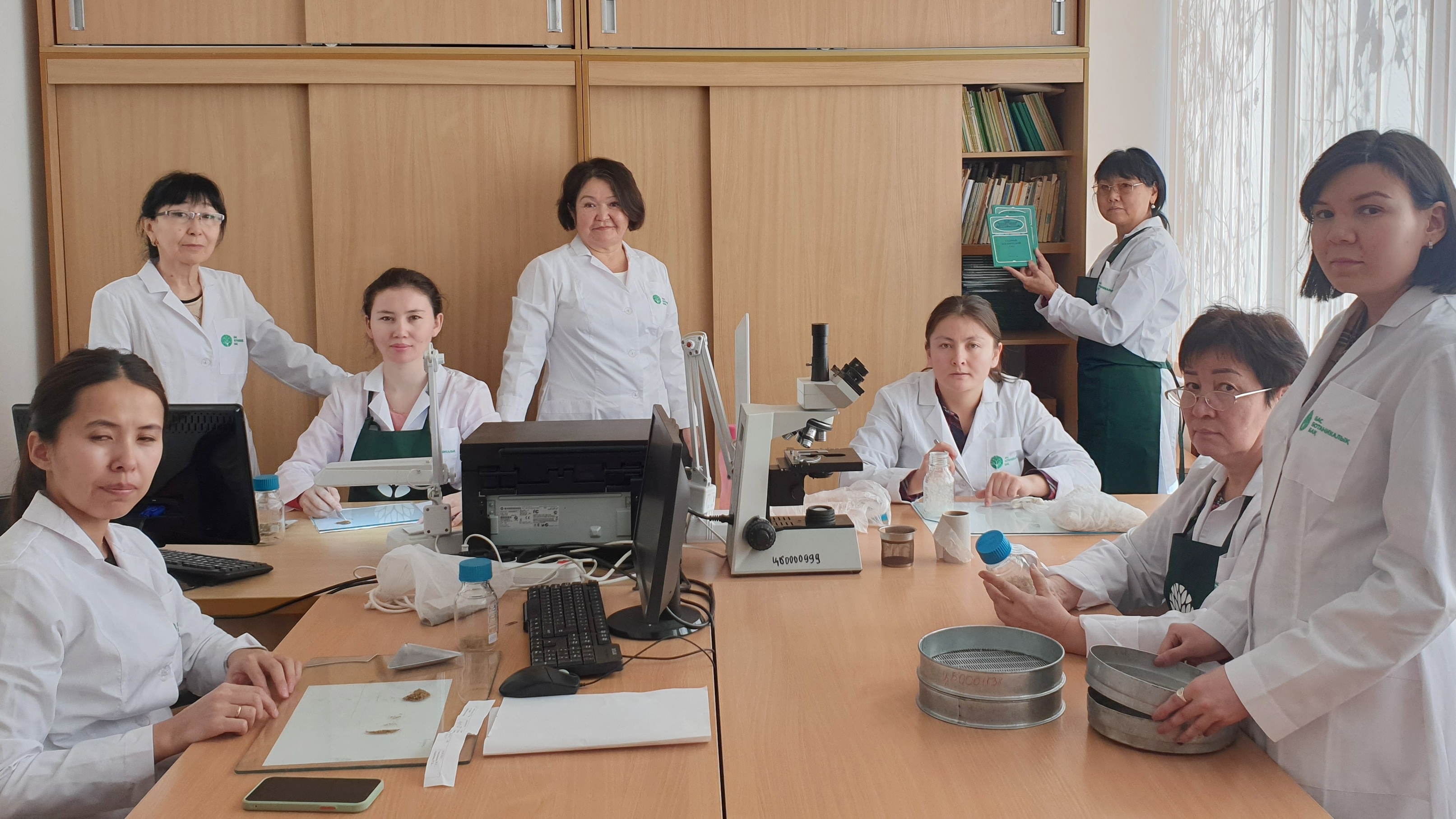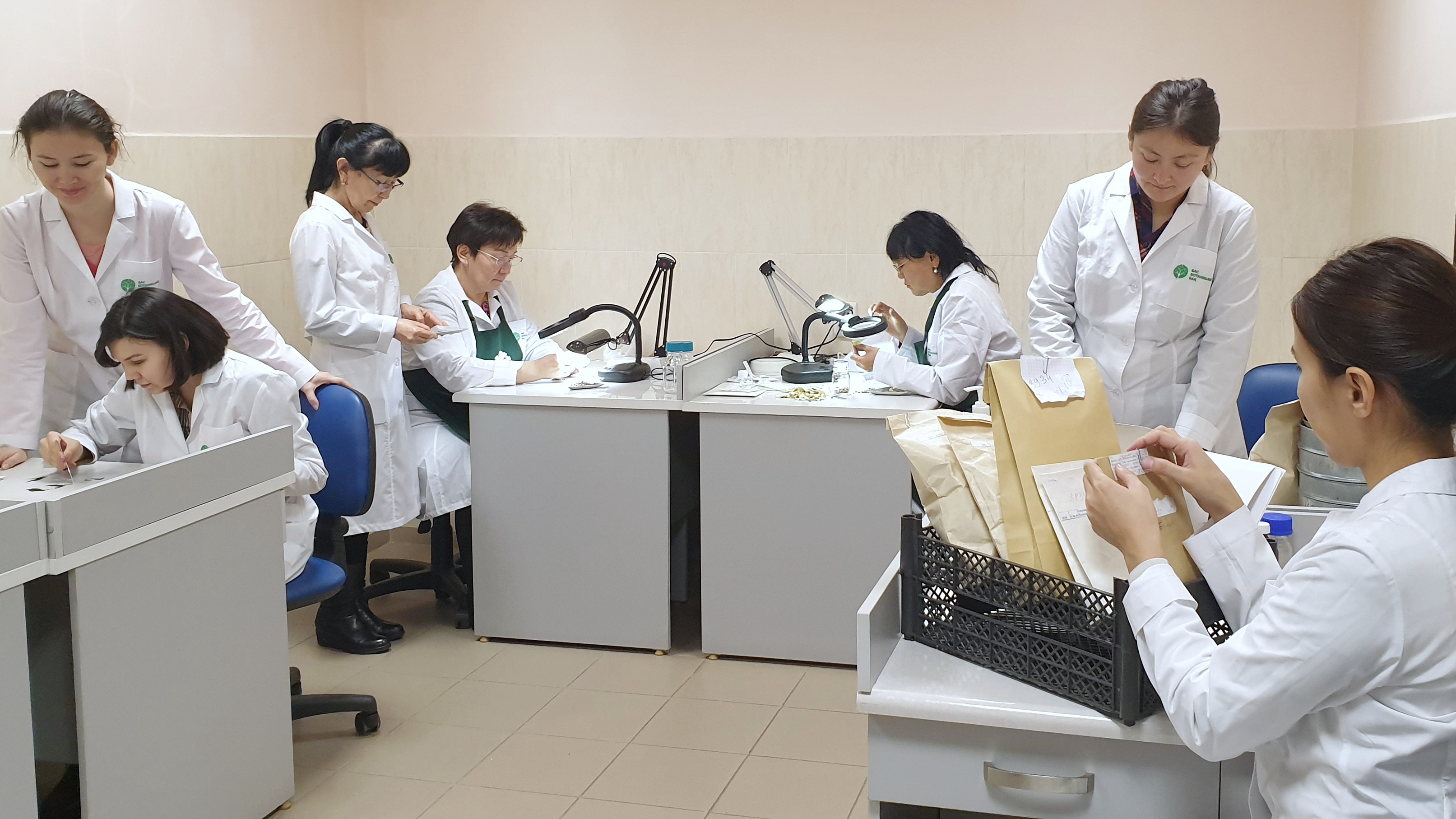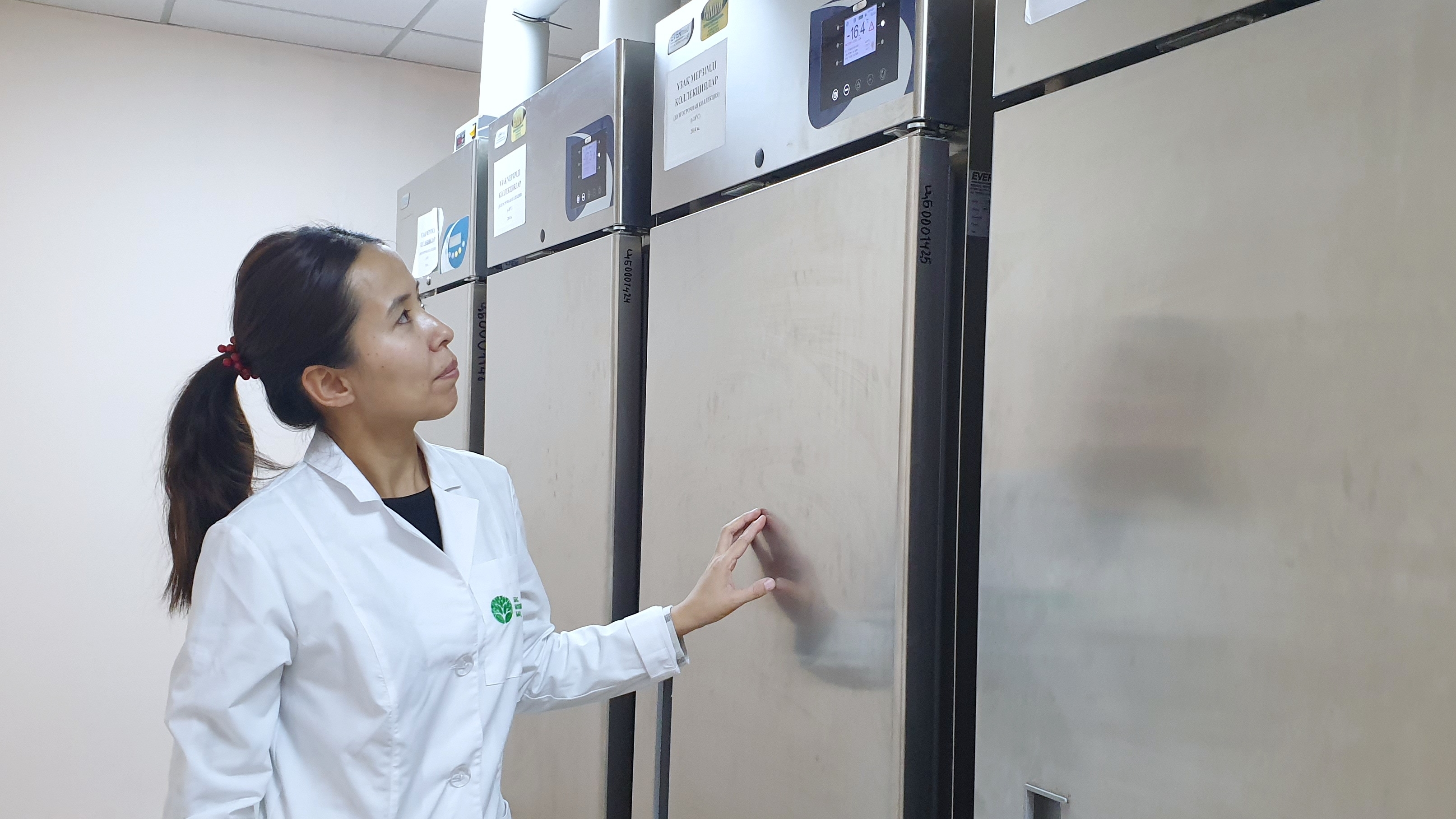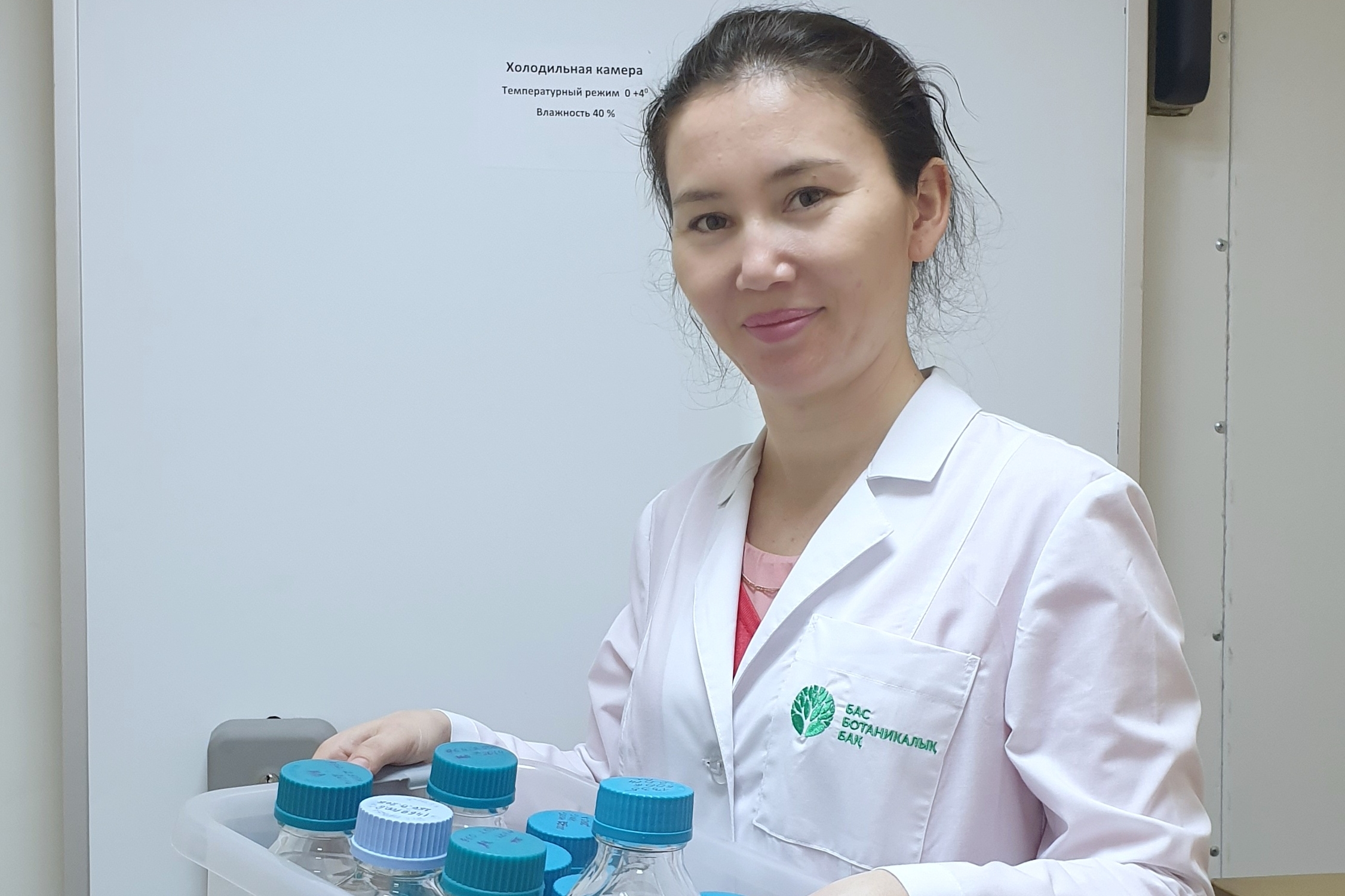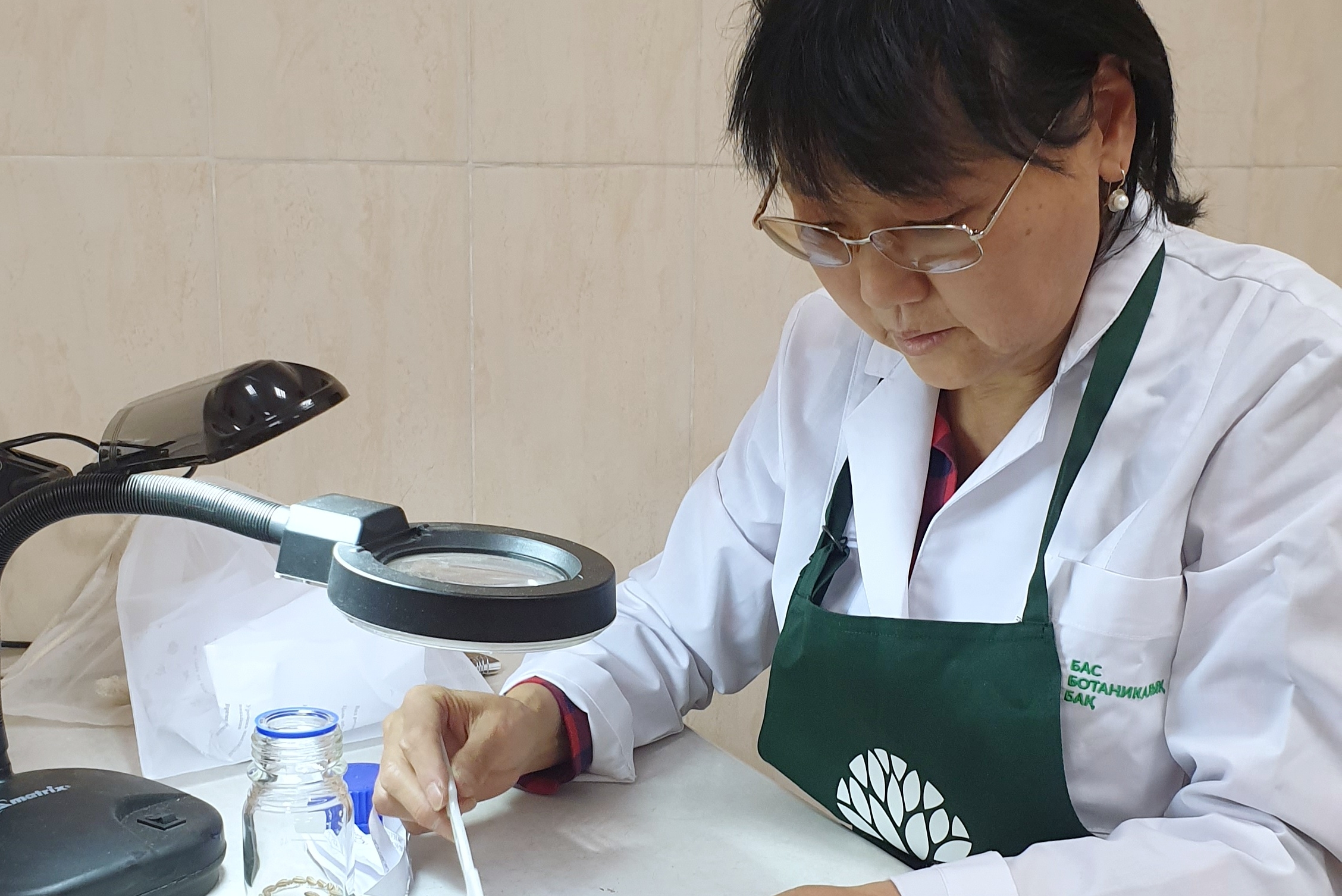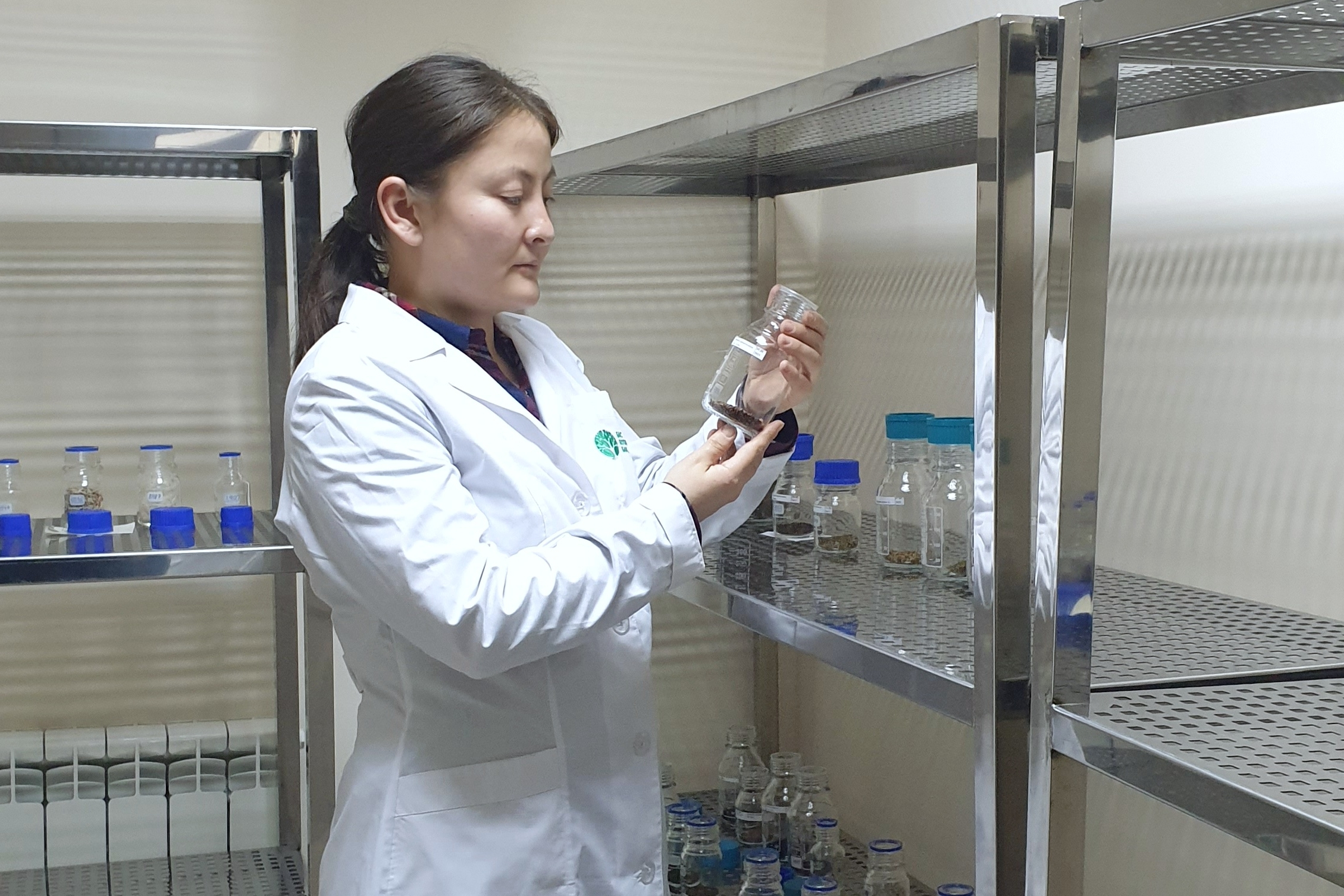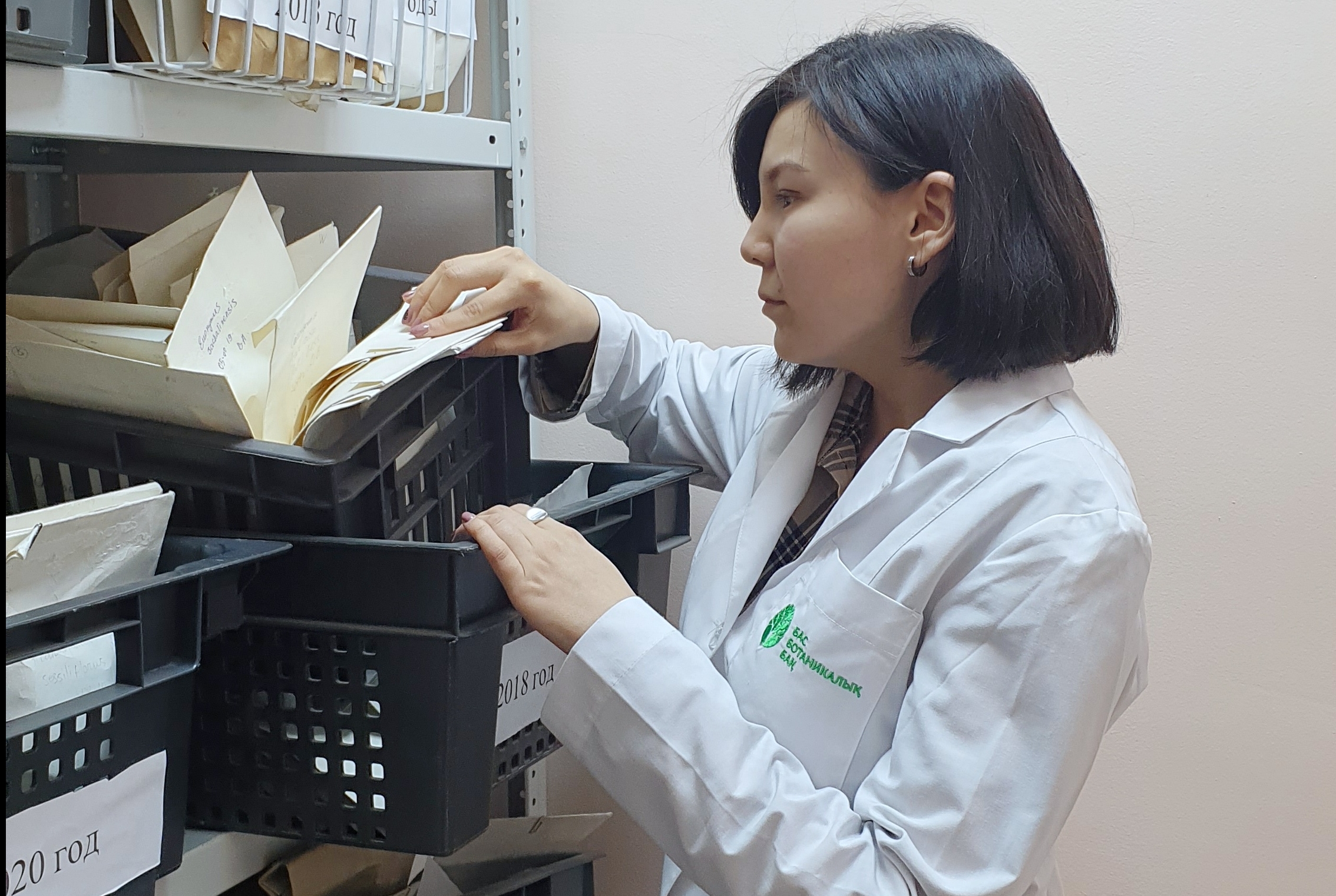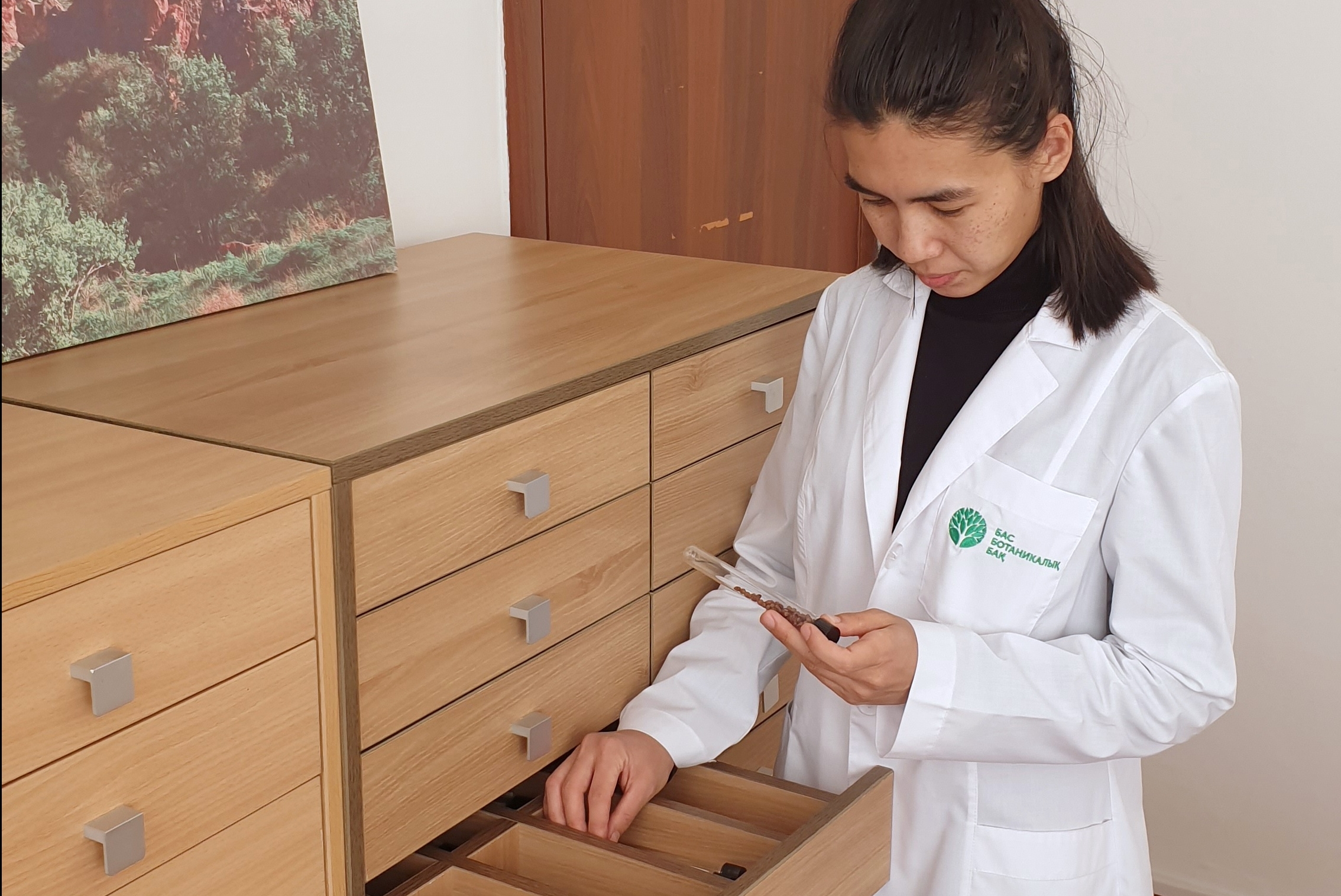The seed research unit was organized in 1932. At that time, employees: developed the exchange fund with botanical institutions of other countries; determined the quality and germination capacity of seeds; and collected, preserved, inventoried, and published seed indices. On December 23, 1973, the Laboratory of Seed Science was approved by decree of the Presidium of the Academy of Sciences of the Kazakh SSR in accordance with the 1969-approved status and structure of the Central Botanical Garden of the Academy of Sciences of the Kazakh SSR. In 2013, G.T. Sytpaeva initiated to create a new Laboratory of Seed Research and Plant Protection under the scientific-oriented program "Botanical diversity of crop wild relatives of Kazakhstan as a source of enrichment and preservation of gene pool agrobiodiversity for the implementation of the food program". At present, 10 employees work at the laboratory. The current head of the lab is Candidate of Agricultural Sciences Tansara Shayakhmetovna Murzataeva.
The main directions of scientific research include:
1. Creation of a seed bank of the natural flora of Kazakhstan;
2. Phytosanitary monitoring of seed material and collection fund of introduced plants;
3. Exchange fund with botanical gardens, arboretums and botanical institutions of other countries;
4. Determination of the quality and germination capacity of seeds recommended for introduction;
5. Collection, storage and inventory of seeds;
6. Publication of seed indices.
In 2013, work began on the creation of a seed bank of the natural flora of Kazakhstan. Its main task is to preserve the genetic diversity of the wild flora of Kazakhstan.
In total, there are more than 6000 species of plants in Kazakhstan! There are about 970 types of seeds with uses in fodder, nutrition, and medicine. This is extremely challenging work that is carried out by all botanical gardens in Kazakhstan. This is the only natural flora seed bank in the country, as well as across the entire CIS. In other countries, natural flora seed banks are combined with agricultural seed banks. Despite the small territory, the bank is provided with all the necessary equipment.
The research cycle at the seed bank has remained the same for the past nine years. First, there is an expedition trip to collect seeds. Most lab employees participate in seed collection. Harvest takes place from May to November as the seeds of different plants mature.
As the seeds arrive, they are assigned a specific number. To date, the seed bank has 4438 samples and 970 species. Starting this year, the collection is divided into a collection of natural flora and a collection of introduced plants (everything that grows on the territory of the botanical garden). After initial drying and cleaning, seed samples are checked for germination. After the germination test, the sample is put into storage. There are two types of storage: long-term in cold storage at a temperature of -18°C and short-term at a temperature from 0 to +4°C.
The data of each sample is entered into a special database. The goal is to equip the bank with all kinds of seeds, including red-book, rare, and endemic seeds. Breeders from all over the world can utilize the information collected in our seed bank. Every year 200-250 samples are added to the collection. 500 samples have been collected already this year. The laboratory employees not only collect and preserve seeds, but also help develop practical usages for the seed bank, since it is responsible for food safety. Such seed banks act as insurance not only for Kazakhstan, but also for the whole planet. Our collection is particularly valuable because of its work in preserving red book species, of which there are a little over 60.
Another area of work of the seed bank is delectus exchange, also known as seed exchange. In the seed bank, you can find flora from all over the world from Japan to America. Delectus exchange began with the foundation of the institute and has been active December to April every year. In 1934, the laboratory began keeping a log of incoming seed material. That very year, the first seed catalog was published. Currently, there are 354 species in the delectus exchange. Everything that is currently growing in the Main Botanical Garden exhibits was obtained through delectus exchange.
